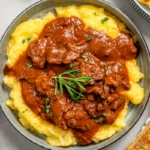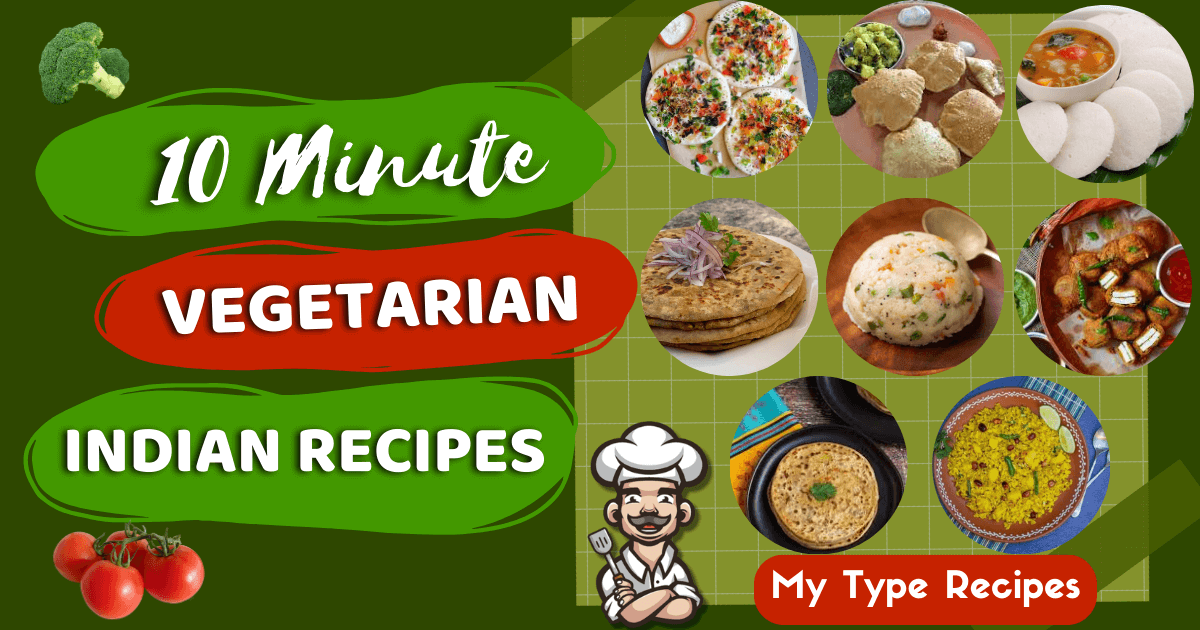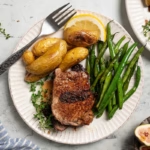Create a delectable Indian meal with this classic Rajma Recipe. Perfect for those who want to master a traditional, hearty meal. Enjoy a flavorful, traditional Indian meal with this easy-to-follow Rajma Recipe. From its delicious flavors to its delightful textures, this simple dish makes a perfect dinner or lunchtime treat.
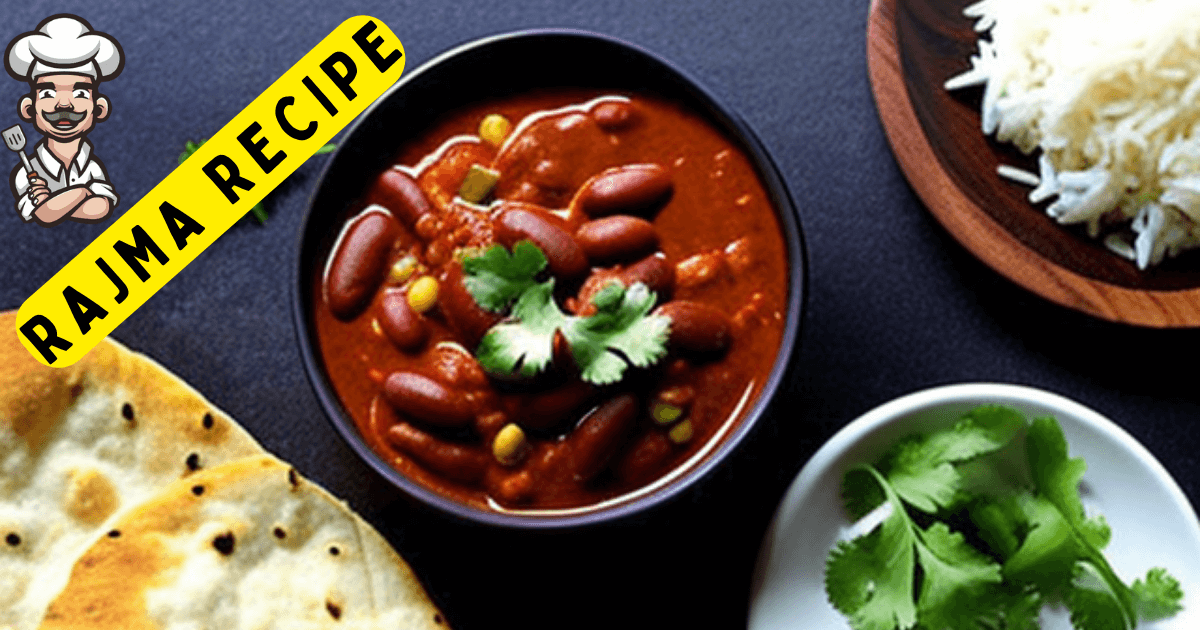
About Rajma
Learn all about Rajma, the great Indian dish made of Kidney Beans! This page has all the information you need to know about its ingredients and preparation. Rajma, also known as Red Kidney Beans, is a classic and delicious Indian dish made with cooked beans simmered in a flavorful spiced tomato sauce.
An easy-to-make main course, it can be made with a variety of vegetables and spices to create your own unique version. Read on for all the info on how to prepare rajma at home!
What is Rajma?
Rajma is an Indian vegetarian dish made with cooked Red Kidney Beans that are simmered in a flavorful tomato-based sauce with a variety of vegetables and spices. It can be served both warm and cold and is typically accompanied by rice.
Ingredients in Rajma.
Rajma is a versatile dish that can include many ingredients. The traditional recipe calls for cooked Red Kidney Beans, onions, garlic, ginger, tomatoes, cilantro, green chilies, garam masala, turmeric powder, coriander powder and salt to taste.
You can also add other vegetables such as potatoes or bell peppers to increase the nutritional value of the dish.
Nutritional Information of Rajma.
Rajma is a great source of fiber, vitamins, minerals, and antioxidants. It’s an excellent source of protein and complex carbohydrates that can help you feel full for longer periods of time.
The combination of spices used to prepare the dish are also thought to have many health benefits, including anti-inflammatory properties. Eating Rajma regularly can also help keep your cholesterol levels in check and lower blood pressure.
5 Quick and Delicious Lions Mane Mushroom Recipe
Traditional Ways to Prepare Rajma.
The traditional way to prepare Rajma usually involves boiling the red kidney beans until they are soft and lightly seasoning them with onions, garlic, ginger, coriander and other spices.
Depending on personal preference, some variations may also involve tomatoes or cream for added flavor. The dish is usually served with rice but can also be enjoyed as a side dish or even as a stand-alone meal.
Rajma is often served with accompaniments such as yogurt, pickles and papadum for extra flavor and crunch.
Variations on the Dish and Other Uses for Rajma.
Rajma offers a great deal of versatility and lends itself to a variety of recipes. For example, leftover cooked Rajma can be easily mixed with boiled potatoes to create a delicious cutlet-style snack.
The protein in the kidney beans also provides great nutrition for vegetarian and vegan diets as an inexpensive replacement for meat. In addition, variations on different sides like salad dishes or kale and spinach served with Rajma offer even more variety in terms of flavor and texture.
Rajma Recipe: Step by Step
Gather the ingredients.
Before you get started, be sure to gather all the necessary ingredients. You’ll need kidney beans, cumin seeds, onion, garlic, ginger paste, tomatoes and a mix of spices like turmeric powder, garam masala and red chili powder.
Additionally, you may want to add some green chilies for an extra kick! Once you have your ingredients prepared, you can start making the Rajma dish.
Start cooking the Rajma beans – soaking and boiling.
The first step in making Rajma is to soak the kidney beans. This can take anywhere from 8-12 hours, so be sure to plan accordingly. Soak the beans in cold water overnight and drain off any extra liquid in the morning.
After soaking, place the beans in a pot with enough water to cover them and bring it to a boil on high heat. Boil for 25-30 minutes or until they’re tender. Once boiled, drain off any remaining liquids and set aside.
Find the Difference Between Restaurant Foods vs Home-Cooked Dishes
Prepare the onion-tomato masala base.
The second step in making Rajma is to prepare the onion-tomato masala base. To do this, heat a large skillet over medium heat and add oil. Once heated, add finely chopped onions and allow them to cook until they’re soft and lightly browned.
Next, add the garlic and ginger paste along with the turmeric and chili powder. Mix everything together and cook until aromatic before adding diced tomatoes.
Cook for 10 minutes or until the tomatoes are very soft, then turn off the heat. Allow the mixture to cool before blending it into a paste using an immersion blender or food processor.
Add diced onions, ginger and garlic to the masala base.
Once the onion-tomato masala is ready, add diced onions, ginger, and garlic to the skillet. Cook until they’re lightly browned and fragrant.
Next, add in the prepared rajma beans along with some salt and mix everything together. Leave the mixture to simmer over low heat for around 15 minutes or until the beans are cooked through. Top with fresh cilantro and serve with hot parathas or roti for a hearty meal!
Simmer with tomato puree, bay leaves and other spices for the authentic Rajma flavor.
Once the sautéed onion-tomato base is ready, add a tomato puree and a few whole bay leaves to the mixture. This is essential for a flavorful dish!
You can also include ground spices such as cumin, coriander powder, garam masala, red chilli powder, turmeric powder and some cubes of cottage cheese.
Mix everything together and let it simmer on low heat for about 10 minutes or until the flavors are well combined. Now your Rajma is ready to be served with hot parathas or roti. Enjoy!
Cook More:
Fair Funnel Cake Recipe
10 Easy Recipes to Make at Home
Super Delicious Punjabi Rajma Recipe (Secret Authentic Recipe)
Discover the secrets behind cooking up an authentic Punjabi Rajma Recipe! Get step-by-step instructions for making this classic Indian dish with our super delicious recipe.
Craving something flavorful and authentic? Have a taste of North India with Punjabi Rajma Recipe! This classic Indian dish uses aromatic spices, creamy red kidney beans, and tomatoes for a delicious vegan dish.
Follow our Easy Recipe to get step-by-step instructions for making this tasty Punjabi Rajma Meal.
Gather the Ingredients.
Before you can make Punjabi Rajma , you will need to gather all the necessary ingredients. These include 2 tablespoons of oil, ½ teaspoon of cumin seeds, 4 cloves garlic (chopped), 4 green cardamoms (crushed), 1 teaspoon of grated ginger, 1 red onion (chopped), 2 large tomatoes (diced), ½ teaspoon of turmeric powder, 2 tablespoons of coriander powder, and 1 teaspoon of garam masala.
In addition, you will need 2 cups cooked red kidney beans, 1 cup water for cooking the sauce, sea salt to taste and optional but recommended garnishes like freshly chopped cilantro and diced onion.
Soak the Lentils and Cook in a Pressure Cooker.
The first step for making Punjabi Rajma Recipe is to soak the kidney beans in cold water for at least 6 hours. Alternatively, you can also cook the beans using a pressure cooker.
To do this, drain and rinse the soaked kidney beans before adding them to the pressure cooker along with 2 cups of water. Put the lid on, seal it, and set the heat selector on high pressure for 10 minutes. When finished, let the pressure cooker release naturally before opening it. Drain off any excess liquid and set aside.
Fry the Onions, Tomatoes, and Ginger Garlic Paste.
Heat a tablespoon of oil in a large saucepan and add the diced onions. Fry until the onions are golden brown and then add the chopped tomato pieces, ginger garlic paste, and all of the dry spice powders.
Stir everything together and cook for about five minutes until all of the spices are fully incorporated with the onion and tomato mixture. This forms a delicious base for your Punjabi Rajma Curry!
Simmer the Prepared Masala for Flavorful Aroma and Taste.
To complete your Punjabi Rajma Curry, let the masala (spiced onion and tomato mixture) simmer for at least 15 minutes. This step infuses all of the flavors so that they become one with each other to create a robust taste that warms up even the most unsuspecting palette!
After 15 minutes, add the soaked rajma (red kidney beans) and stir to combine. Cook for about 10 minutes until the curry is dissolved in all of its spiced glory. Serve with rice or roti for an extra crispy yet delicious side dish.
Combine the Rajma and Masala Together & Let it Simmer Again.
After adding the pre-soaked rajma (red kidney beans) to the already simmered masala, let the curry cook for 10 minutes. Stir occasionally and be sure not to overcook!
This will allow all of the flavors to infuse together into one delightful taste that can’t be replicated elsewhere. Add some water to thin out and create a new layer of seasoning. Taste-test as you simmer away in order to personalize your Punjabi Rajma Recipe!
Simple and Easy Rajma Recipe Instant Pot
Take the hassle out of traditional Rajma Recipe Instant Pot – all you need is an Instant Pot, some ingredients, and this simple guide! Enjoy mouthwatering flavours in no time. Have you been searching for an easy and delicious Rajma Recipe Instant Pot recipe? Look no further! This simple guide will show you how to prepare a tasty dish using an Instant Pot that’s perfect for your next dinner or potluck.
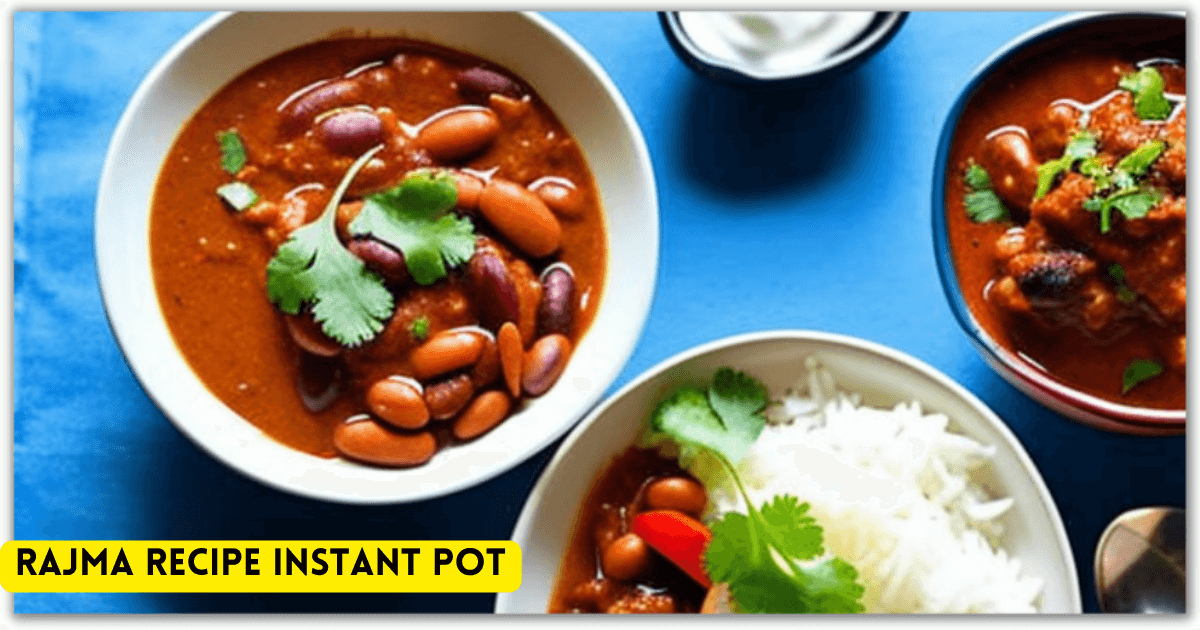
Gather your ingredients for the Rajma Recipe
To make this Rajma Recipe Instant Pot, you will need the following ingredients: 1 cup of dried red kidney beans, 1 onion diced, 3 cloves garlic minced, 2 tablespoons tomato paste, 1 teaspoon each of cumin powder and garam masala spice mix, 2 bay leaves, 2 teaspoons kosher salt and 4 cups of water. Additionally, you may want to have extra clarified butter or ghee on hand to garnish your finished dish.
Prepare and add ingredients to the Instant Pot.
Start by washing and soaking your Red Kidney beans for 8-12 hours. Once the beans are soaked, it’s time to get started! Add all ingredients including the drained beans to the Instant Pot. Secure the lid on top, set the steam release lever to ‘sealing’ and press “Manual” or “Pressure Cook” button. Set the timer to 12 minutes in high-pressure mode. It will take about 10 minutes for the pressure cooker to build up enough pressure before cooking starts.
Set the Instant Pot timer and cooking time according to your recipe instructions.
Once the timer has come to an end, it’s time to release the pressure from the Instant Pot. Move the steam release lever to “venting” mode and wait for the pressure to completely release before opening the lid. Once pressure is released, open the lid and add any additional ingredients as required in your recipe (if applicable). Now your delicious fragrant Rajma Curry is ready to be served!
Faqs:
Is Rajma a healthy diet?
Rajma has many health benefits:
– Rajma is rich in protein, fiber, magnesium, potassium, calcium, zinc, and other nutrients that are essential for various body functions.
– Rajma may help lower cholesterol levels, as it contains soluble fiber that can bind to bile acids and prevent their absorption.
– Rajma may help regulate blood sugar levels, as it has a low glycemic index and can slow down the release of glucose into the bloodstream.
– Rajma may help strengthen bones and teeth, as it provides calcium and magnesium that are important for bone formation and maintenance.
– Rajma may help prevent diabetes and heart disease, as it can improve insulin sensitivity and reduce inflammation.
– Rajma may also have antioxidant and anti-cancer properties, as it contains phytochemicals that can scavenge free radicals and inhibit tumor growth.
So, rajma can be considered a Healthy Diet, especially when combined with whole grains, vegetables and healthy fats. However, rajma also has some side effects, such as:
– Rajma may cause gas and bloating, as it contains oligosaccharides that are hard to digest by human enzymes. Soaking and rinsing rajma before cooking can reduce this problem.
– Rajma may also contain lectins and phytates, which are anti-nutrients that can interfere with the absorption of minerals and proteins. Cooking rajma properly can deactivate these substances.
– Rajma may also cause allergic reactions in some people, such as itching, swelling, hives, nausea, vomiting, and diarrhea. If you have a history of food allergies, consult your doctor before eating rajma.
Therefore, rajma should be eaten in moderation and with proper preparation to enjoy its health benefits and avoid its side effects.
Can we eat rajma every day?
The amount of rajma you should eat per day depends on your age, weight, activity level and health goals. However, some general guidelines are:
– Rajma is a good source of protein, which is essential for building and repairing muscles, tissues, and organs. The recommended dietary allowance (RDA) for protein is 0.8 grams per kilogram of body weight per day for adults. This means that an average adult weighing 70 kg needs about 56 grams of protein per day.
– Rajma is also high in fiber, which can help lower cholesterol, regulate blood sugar, prevent constipation and promote weight loss. The adequate intake (AI) for fiber is 38 grams per day for men and 25 grams per day for women.
– Rajma is also rich in carbohydrates, which provide energy for the body and brain. The acceptable macronutrient distribution range (AMDR) for carbohydrates is 45 to 65 percent of the total calories per day. This means that an average adult consuming 2000 calories per day needs about 225 to 325 grams of carbohydrates per day.
According to these guidelines, one cup (177 grams) of cooked rajma provides about:
– 15 grams of protein (27 percent of RDA for a 70 kg adult)
– 13 grams of fiber (34 percent of AI for men and 52 percent of AI for women)
– 40 grams of carbohydrates (18 percent of AMDR for a 2000-calorie diet)
Therefore, one cup of cooked rajma can be a good portion size for most people, as it provides a balanced amount of protein, fiber and carbohydrates. However, you may need to adjust your serving size depending on your individual needs and preferences. You may also want to consider the calories and other nutrients in rajma, such as fat, sodium, iron, potassium and calcium.
One cup of cooked rajma contains about:
– 225 calories (11 percent of a 2000 calorie diet)
– 1 gram of fat (2 percent of RDA)
– 4 milligrams of sodium (0 percent of RDA)
– 5 milligrams of iron (28 percent of RDA for men and 13 percent of RDA for women)
– 742 milligrams of potassium (16 percent of AI)
– 46 milligrams of calcium (5 percent of RDA)
As you can see, rajma is low in fat and sodium, but high in iron and potassium. It also provides some calcium, but not enough to meet your daily needs. Therefore, you may want to pair rajma with other foods that can complement its nutritional profile, such as:
– Whole grains, such as brown rice, quinoa or millet, to provide more fiber and complex carbohydrates
– Leafy greens, such as spinach, kale or mustard greens, to provide more calcium and vitamin K
– Dairy products, such as yogurt, cheese or paneer, to provide more calcium and protein
– Nuts and seeds, such as almonds, walnuts or sesame seeds, to provide more healthy fats and minerals
– Fruits, such as mangoes, bananas or oranges, to provide more vitamin C and antioxidants
By combining rajma with these foods, you can create a balanced and delicious meal that can satisfy your hunger and nourish your body.
How to make Rajma Soft?
There are different ways to make rajma soft, depending on whether you are using dry or canned beans. Here are some tips:
– If you are using dry rajma, you need to soak them overnight or for at least 8 hours in enough water to cover them. This will help them absorb water and soften. You can also add a pinch of salt or baking soda to the soaking water to speed up the process.
– After soaking, you need to drain and rinse the rajma and cook them in fresh water until they are tender. You can use a pressure cooker, a pot, or a microwave to cook them. The cooking time will vary depending on the type and size of rajma, but generally, it will take 3 to 4 whistles in a pressure cooker, 45 to 60 minutes in a pot, or 15 to 20 minutes in a microwave.
– If you are using canned rajma, you don’t need to soak or cook them, as they are already soft and ready to use. However, you need to drain and rinse them well before adding them to your dish, as they may contain excess salt or preservatives.
– To make the rajma softer and creamier in your dish, you can mash some of them with the back of a spoon or a potato masher. This will also thicken the gravy and enhance the flavor.
How many hours should we Soak Rajma before cooking?
As I mentioned before, you should Soak Rajma overnight or for at least 8 hours before cooking. This will help them soften and cook faster. If you are short on time, you can also soak them in boiling water for half an hour, but this may not yield the same results as soaking them for longer.
What are the disadvantages of rajma?
Rajma is a nutritious and delicious food, but it also has some disadvantages or side effects, such as:
– Rajma may cause nutritional overload, as it contains high amounts of lectins and phytic acid, which are anti-nutrients that can interfere with the absorption of minerals and proteins. These substances can also cause inflammation and damage to the intestinal lining if consumed in excess.
– Rajma may cause digestive problems, such as gas, bloating, diarrhea and abdominal discomfort. This is because rajma contains a lot of fiber, which can be hard to digest for some people. Rajma also contains oligosaccharides, which are complex sugars that can ferment in the gut and produce gas.
– Rajma may cause food poisoning if they are not cooked properly or if they are contaminated with bacteria. Raw or undercooked rajma contain a toxin called phytohaemagglutinin, which can cause nausea, vomiting, diarrhea, and even death in severe cases. Therefore, rajma should be soaked, rinsed and boiled well before eating.
– Rajma may cause allergic reactions, in some people who are sensitive to legumes or beans. The symptoms may include itching, swelling, hives, difficulty breathing, anaphylaxis, and shock. If you have a history of food allergies, consult your doctor before eating rajma.
– Rajma may interact with certain medications, such as anticoagulants (blood thinners), diabetes drugs, and thyroid hormones. Rajma contains vitamin K and potassium, which can affect blood clotting and blood sugar levels. Rajma also contains goitrogens, which can interfere with thyroid function. Therefore, if you are taking any of these medications, consult your doctor before eating rajma.
Hi, I am Harry a food blogger. I like to experiment with recipes and love to share with you. A knack for turning everyday meals into extraordinary culinary adventures! From discovering hidden gems in local eateries to whipping up mouthwatering recipes at home, I share a love for all things delicious. Join my journey as they explore flavors, experiment with ingredients, and bring the joy of food to life, one bite at a time!” @mytyperecipes


